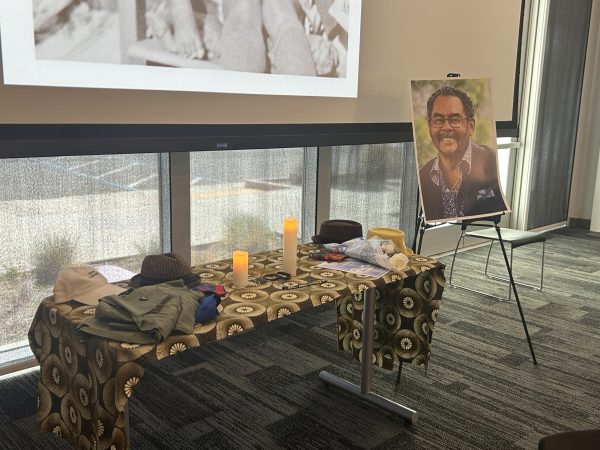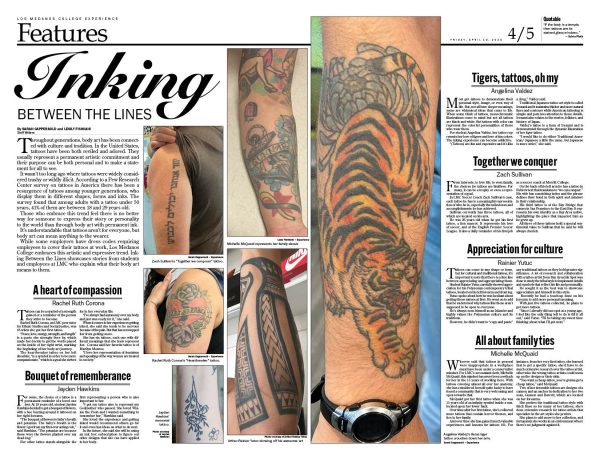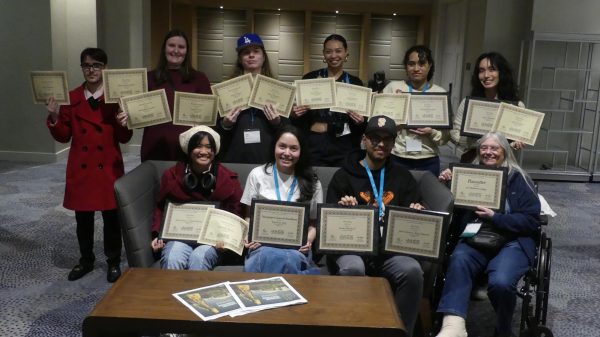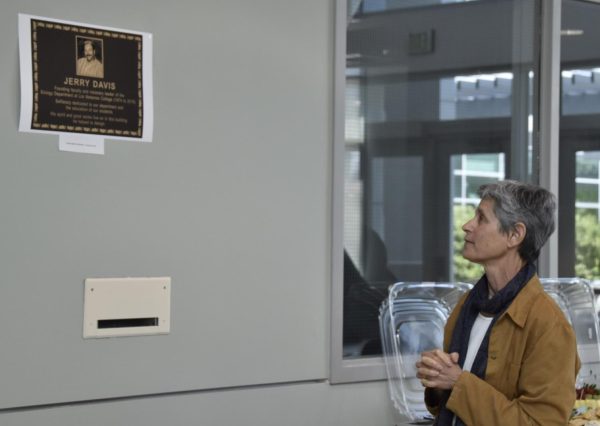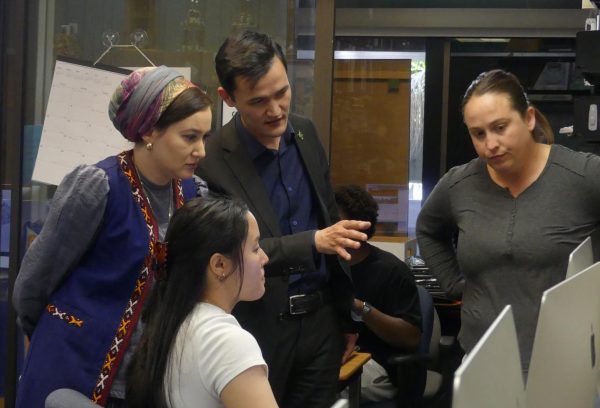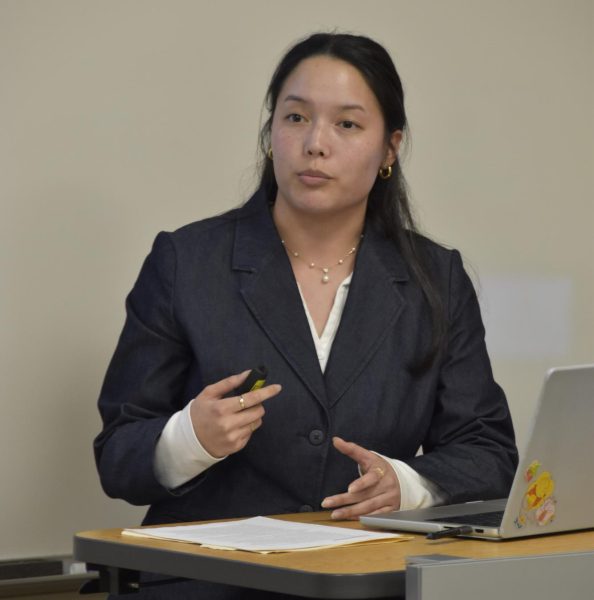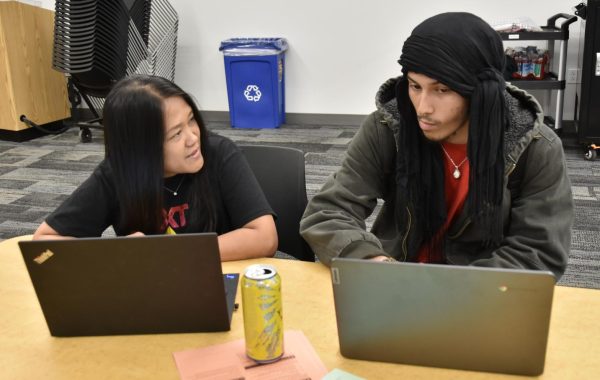Lessons from the 2016 presidential election
Second Headline
Los Medanos College Political Science Professor Ryan Hiscocks guided participants Oct. 29 through an array of voting patterns, local ballot measures and why the 2016 presidential election is significant to the current race.
The presentation, Do the Math: Voting Patterns & the 2020 Election was the third in a series of pre-election events on Zoom sponsored and organized by the Honors Program to support and inform voters.
Honors Director Jennifer Saito, who moderated the event, gave a brief rundown of the topic lineup and then kicked things off with a question about how the 2016 election is relevant to 2020.
“Our elections, they don’t exist in a vacuum,” Hiscocks said. “Obviously, what happened in 2016, as candidate Trump became President Trump, is going to be related to his reelection campaign.”
Hiscocks explained that three aspects of the 2016 election season have persisted: polling, the pivotal role of the Great Lakes states, and demographics.
The overwhelming consistency of national opinion polls that heavily favored Hillary Clinton to win the presidency, he said, led to immense skepticism of polling accuracy this time around. But Hiscocks pointed out that polls are about odds and weren’t actually incorrect.
“You have to shift your perspective on what the predictions actually meant,” he said. “Trump’s own campaign only gave him about a 20% chance of winning… so the polls weren’t wrong, it was just the 20% chance happened.”
And it happened in some surprising places. Several of the Great Lakes states — Wisconsin, Pennsylvania, and Michigan — are swing states, but recent election history showed they had consistently gone to Democrats over the past few decades, he said. When they went Republican in 2016, it was shocking because a relatively small number of votes made a big difference in the national outcome.
“There’s a reason why these three states get looked at heavier than others. You see the difference in these three states combined when you look at the popular vote of only 77,000 votes in Trump’s favor,” he said. “So, these states were being decided, especially Michigan, on a razor thin margin.”
Hiscocks reminded the audience it takes 270 electoral votes to win the presidency and these three states account for 46 votes combined. If you took those 46 votes and put them in Clinton’s column, she would have been declared the winner. Three states had the power to swing the presidency in 2016, something Hiscocks called the “red tide in the great lakes,” and there is a high possibility of seeing it replay this year.
Changes in demographic trends — who actually shows up to vote — are also key to who wins an election.
“One of the major realignments that has taken place in this country is based on education,” said Hiscocks. “The education of one group and one group only, a majority group — this is white voters.”
In 2016, white voters without a college degree overwhelmingly voted for the Republican party, while white voters with a college degree favored Democrats. In addition, he said Clinton performed worse in 2016 with women and Latinx voters than Barack Obama four years earlier.
Hiscocks explained that race and gender in politics are often pigeonholed and that geographic-related cultures and beliefs are sometimes overlooked to the detriment of expected outcomes. For example, immigration was a hot button issue in 2016.
“People listening to the rhetoric of candidate Trump would come to the very reasonable conclusion that this was going to alienate Latinx voters,” said Hiscocks. “Problems with coming to conclusions such as this is that you start to believe that you’re talking about a monolithic group of people, but Latinx voters from Cuba in a state like Florida are dramatically different than Latinx voters in a state like California.”
The presentation shifted to state politics when moderator Saito asked Hiscocks to highlight forecasts on a few California ballot initiatives.
Prop 16 seeks to reverse Prop 209, passed in 1996, which outlawed affirmative action in the state. Hiscocks said the polls indicate 16 is likely to fail. Prop 22, he said, also seeks a reversal, but of CA AB5, a bill passed by the California Legislature in 2018 mandating benefits for gig workers — those employed by companies such as Uber, Lyft and Door Dash. Hiscocks said this proposition is also likely to fail despite the vast amounts of money being poured into getting it passed.
“The money coming in from the companies… you’re talking about $200 million, an obscene amount of money,” he said. “This really gets into deeper questions about direct democracy in California. It costs so much money and takes a small army to get these propositions to the voters… essentially this system, like so many other political systems, is so incredibly biased toward people with wealth and corporations.”
As the presentation moved into its final segment, an audience Q&A, Saito asked Hiscocks for his predictions. While he refrained from picking winners, one thing he did predict is a huge turnout in voters, something already taking place. More than 51% of the total 2016 vote has already been cast in early voting, he reported, and a majority of polls are giving the edge to former Vice President Joe Biden.
As the Q&A drew to a close Hiscocks dispensed last-minute words of wisdom. “Vote,” he said, and then specifically addressed those who think voting is meaningless.
“I know we all think of ourselves as individuals, but voting patterns hold,” he said. “There are millions of people just like you and the reasons that you’re using and the justifications you’re putting forward about why you’re not going to vote, are exactly the same justifications they’re going to use… Vote, participate, it matters.”



